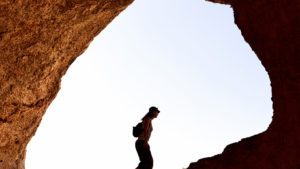A cultural landscape is more than just a physical space—it’s a tapestry woven with the threads of human history, societal norms, and geographical features. Geographers, akin to detectives, unravel these intricate patterns to gain profound insights into the past, present, and potential future of a region. If you are looking to explore the deeper aspects of cultural landscapes or need help analyzing such topics in an academic context, you might consider ghostwriter bachelorarbeit, a service that assists with writing research papers and theses.
Analyzing cultural landscapes allows geographers to understand the complex relationship between people and their environment. It’s like reading an open book, where every element—from architecture to land use—tells a unique story of cultural evolution and human interaction.
Stay tuned as we delve into the fascinating world of what insights can a geographer gain from analyzing a cultural landscape, exploring the invaluable insights they offer to geographers, and how they contribute to our understanding of the world.
What Insights can a Geographer Gain from Analyzing a Cultural Landscape
Unraveling the secrets encoded in what insights can a geographer gain from analyzing a cultural landscape presents geographers with a wealth of knowledge about societies. This information dissection process, however, demands meticulous analysis and an interdisciplinary approach.
How to Conduct a Cultural Landscape Analysis
 Successful cultural landscape analysis entails several critical steps. Firstly, it identifies the principal components of the environment, such as architecture, parts of nature, and cultural artefacts. For instance, a town’s style of building or a region’s predominant plants and fauna can provide insights into its cultural value.
Successful cultural landscape analysis entails several critical steps. Firstly, it identifies the principal components of the environment, such as architecture, parts of nature, and cultural artefacts. For instance, a town’s style of building or a region’s predominant plants and fauna can provide insights into its cultural value.
Secondly, it conducts an in-depth investigation of historical records. Estimates of the populace’s migration patterns, economic activities, and social practices are extracted from exhaustive historical research.
Lastly, it synthesizes the information collected into a cohesive, comprehensive understanding of the landscape. This knowledge compilation includes both the tangible aspects, like monuments and economic resources, and the intangible dimensions, such as cultural practices and values. In effect, the process of analyzing cultural landscapes necessitates a blend of field investigation, historical exploration, and holistic interpretation.
The Value of Interdisciplinary Approach
 An interdisciplinary approach to what insights can a geographer gain from analyzing a cultural landscape undoubtedly enriches the comprehension of geographers. Melding principles from fields like anthropology, history, sociology, and art, this technique illuminates different facets of the landscape, rendering a more holistic picture.
An interdisciplinary approach to what insights can a geographer gain from analyzing a cultural landscape undoubtedly enriches the comprehension of geographers. Melding principles from fields like anthropology, history, sociology, and art, this technique illuminates different facets of the landscape, rendering a more holistic picture.
For qualitative understanding, anthropology and sociology offer indispensable insights into cultural norms and societal behaviors. These disciplines shed light on human interactions with the environment and the resulting adaptations.
From a chronological perspective, historical knowledge unveils the timeline of cultural changes and the factors driving these transitions. For instance, they could uncover the influences of colonialism, wars, or technological advancements on the landscape.
Finally, an aesthetic lens, often borrowed from art and architecture, aids in appreciating the beauty and design of tangible elements in the landscape, such as monuments, buildings, or human-made parks. This aesthetic appreciation adds a subjective dimension to the overall understanding of the cultural landscape.
The Challenges and Limitations in Analyzing Cultural Landscapes
Analyzing cultural landscapes presents its unique set of challenges. These challenges mainly revolve around the inherent subjectivity of cultural interpretations and the evolving methodologies aimed to overcome these limitations.
Addressing the Subjectivity in Cultural Landscape Analysis
 Analyzing cultural landscapes carries the challenge of addressing subjectivity. Given that the assessment hinges on human interpretation of physical features, discrepancies are inevitable. For instance, in interpreting the same sets of artifacts, geographers with different cultural backgrounds might perceive varying societal norms (like the Ephesus case in Turkey), leading to potential bias. It’s important for geographers to recognize these biases and aim for as much objectivity as possible.
Analyzing cultural landscapes carries the challenge of addressing subjectivity. Given that the assessment hinges on human interpretation of physical features, discrepancies are inevitable. For instance, in interpreting the same sets of artifacts, geographers with different cultural backgrounds might perceive varying societal norms (like the Ephesus case in Turkey), leading to potential bias. It’s important for geographers to recognize these biases and aim for as much objectivity as possible.
Overcoming Limitations Through Evolving Methodologies
Methodological advancements play vital roles in overcoming analysis limitations. Over the years, geographers have utilized innovative methods for objective renderings of cultural landscapes. An example is the adaptive use of advanced technologies such as Geographic Information Systems (GIS) in landscape analysis. In the Chicago case mentioned previously, this technology allowed for precise examination of developmental patterns and assessments of urban sustainability. Moreover, collaborative efforts among different disciplinary experts—like sociologists, historians, anthropologists—are crucial to minimize bias and enrich the understanding of cultural landscapes. These evolving methodologies serve to enhance the accuracy and reliability of cultural landscape analysis.

